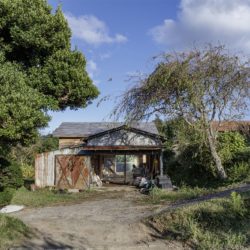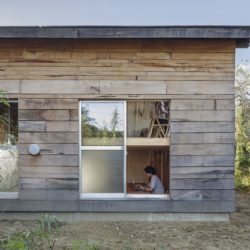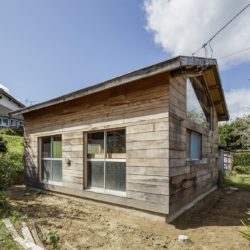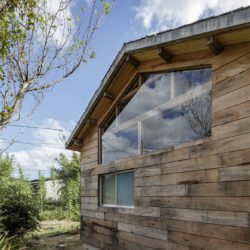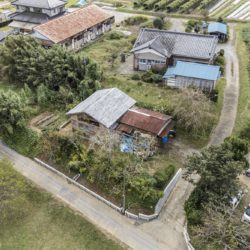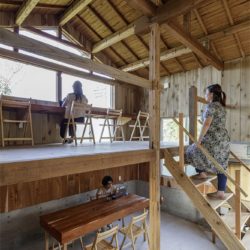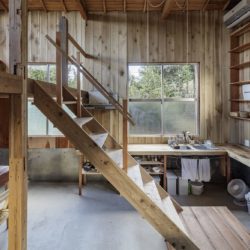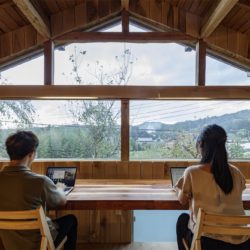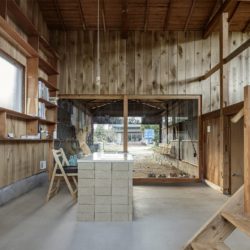
Kurosawa Kawara-Ten . photos: © Masato Chiba
In 2020, with COVID-19 raging, the remote work has been installed semi compulsorily, a very innovative lifestyle for Japan, it was thought that more people would consider leaving densely populated areas such as central Tokyo and Chiba City to live in the suburbs or more rural areas. In response to the emergency situation caused by the corona crisis, Ichihara City in Chiba Prefecture established “the Ichihara Life and Work Commission”, a public-private partnership to accept people who wanted to move to the satoyama area, while at the same time taking measures to prevent infection.
Yosuke Takahashi, who had been working as a member of the Regional Development Cooperation Volunteers in the Kamo area of southern Ichihara City before the Corona disaster, was working on a business called “Kaitakusha” that opens vacant houses in the Kamo area and rents them out as an exit project for the Cooperation Volunteers. The Kaitakusha was to be in charge of handling individual immigration as part of the Life and Work Commission, and the plan was to use a vacant house behind Yorokeikoku Station to develop a base of operations.
The main house was a very attractive building, but due to the budget, the construction work, and the difficulty of design and construction, it was decided to use only the detached house.
The design was based on Kaitakusha’s concept, “Light on Vacant Houses,” and was guided by the idea of lightening up on things like vacant houses that are unnecessary to the owners and locals, but attractive to outsiders, and connecting them to the next generation.
First of all, the “Chonan house,” a house for the eldest son made of new construction materials next to a magnificent traditional wooden structure like a detached house that was chosen, is a symbol of the difference in values between the owner and outsiders, who usually place value on that rather than the old house, although the atmosphere of the old house is destroyed and its value is reduced. Therefore, we wondered if we could bring out the potential of the “Chonan House,” where there was ordinary life in the countryside.
First of all, we decided to remove all the non-stractural walls dividing the interior space, because the conventional wooden structure makes it easy to plan the structure and to reinforce it. Then, there was a high shed frame that had been built to full material standards and hidden in the ceiling, and the foundation was made of concrete blocks. The foundation would have to be reinforced, but there was no budget for towing the house, so we decided to partially place the foundation while retaining the upper framework. By digging a little extra earth at this time, a space of two layers was secured, and the space was reconfigured into a step floor space with minimal pressure on the surrounding area with little change to the external form.
By creating a large window on the north face of the second floor level, we created an office space where people can work while looking at the scenery of a beautiful valley village, which had not been seen before.
The soil dug for the foundation was used as the finishing for the counter top panel of the Otsu polishing by the plasterer Tokura’s technique, and the bricks created in the workshop were used as the tiling for the reception counter.
For the interior and exterior, oak, mountain cherry, small oak, and magnolia trees were cut and milled from hardwoods that were no longer used and had become large trees in the hills behind the village.
The spacious one-room space is not only for young people, prospective immigrants, and other outsiders, but also for local people who are on good relationship with the Kaikyakusha, who frequently come the house.
_

